Please note this article contains details which some readers may find disturbing.
*
In May 2018 one of Britain’s most notorious serial killers- Dennis Nilsen– died in prison after spending 35 years behind bars for a string of gruesome murders committed during the late 1970s and early 80s.

Dennis Nilsen shortly after his arrest in 1983
These crimes were intrinsically linked to two north London addresses, the second of which would grant the bespectacled killer his sinister nickname; ‘The Muswell Hill Murderer.’
*
Nilsen was born on 23rd November 1945 in Fraserburgh, a remote Scottish fishing town located 40 miles north of Aberdeen.

Fraserburg Harbour 1958 (image Eileen Warren Creative Commons Geograph)
Nilsen’s father- Olav Magnus Moksheim- was a Norwegian soldier who’d travelled to Scotland during World War Two. Unfortunately he was also an alcoholic and soon abandoned the family, meaning the four year old Dennis looked towards his grandfather as a paternal figure.
Although Nilsen was still young when his beloved grandfather died, his mother insisted her son view the body before the funeral; an event which Nilsen would later claim made him develop a disturbing obsession with corpses.
*
When he was 16 Nilsen signed up with the army where he trained to be a chef, mastering butchery skills which, as we’ll soon see, were later put to ghastly efficient use.

Dennis Nilsen during his army days
After serving in West Germany, Aden and Northern Ireland Nilsen left the military in the early 70s and headed to London where he enrolled with the Metropolitan Police Force, spending a brief period as an officer stationed at Willesden Green.

Dennis Nilsen as a young police recruit
He soon realised however that law enforcement wasn’t for him and so adopted a new role as a civil servant, working at a JobCentre on Denmark Street– a small road in the heart of London’s West End nicknamed ‘Tin Pan Alley‘ which has long been associated with the music industry.

Footage of a JobCentre, 1980
The JobCentre in which Nilsen worked has since been transformed into a branch of the Fernadez and Wells cafe chain.

Fernandez and Wells Cafe- site of the former Denmark Street JobCentre in which Dennis Nilsen was employed as a civil servant (image: Google Streetview)
*
In the autumn of 1975 Nilsen intervened to rescue a young man named David Gallichan who was being threatened outside a pub.
He invited David back to his bedsit on Cricklewood’s Teignmouth Road and the pair quickly embarked upon a relationship.

Teignmouth Road, Cricklewood today (image: Google Streetview)
However, after the couple moved a short distance to a larger flat at 195 Melrose Avenue, David- who Nilsen nicknamed ‘Twinkle‘- quickly came to realise that Nilsen was short-tempered and verbally abusive.
Dennis Nilsen’s abrasive attitude can be witnessed in a number of Cine Films which he and David shot during this period…click below to view.
After one particularly explosive argument in 1977, David decided to pack his bags and leave- a lucky escape in hindsight.
*
Now alone, Nilsen began drinking heavily and it was whilst boozing in the Cricklewood Arms on the 30th December 1978 that he encountered his first victim; a 14 year old Irish youth named Stephen Holmes.

Stephen Holmes
Stephen had been to a concert in Willesden and was returning home to Kilburn when he decided to try his luck in the pub. When the youngster was refused service at the bar, Nilsen- who claimed he thought Stephen was 17- invited the lad back to Melrose Avenue for a drink.

Melrose Avenue today (image: Google Streetview)
Following a heavy session, he awoke at dawn to find Stephen still fast asleep.
“I was afraid to awake him in case he left me” Nilsen would later state, adding “He was going to stay with me over the New Year whether he wanted to or not.”
With this grim decision made, Nilsen strangled the sleeping youngster with a necktie before plunging his head into a bucket of water.
When interviewed about Stephen’s murder, Nilsen chillingly said, “I had started down the avenue of death and possession of a new kind of flat-mate.”
Stephen’s body was stashed beneath the floorboards where it would remain for eight months until Nilsen decided to burn the remains in the back garden; a plot of land to which he conveniently had exclusive access.
*
Nilsen’s second recorded victim was a 23 year old Canadian tourist named Kenneth Ockendon who he met during a lunchtime drinking session at the Princess Louise pub on Holborn in December 1979.

The Princess Louise today (image: Google Streetview)
As twilight set in and London’s Christmas lights began to sparkle, Nilsen gave Kenneth a guided tour of the city.

Trafalgar Square, Christmas late 1970s
He then invited the Canadian back to his flat for a nightcap and as the pair knocked back alcohol Nilsen suggested Kenneth should listen to some of his records- which were largely defined by experimental music such as Mike Oldfield’s Tubular Bells and The Who’s rock-opera, Tommy.
As Kenneth donned a pair of headphones and zoned out, Nilsen slunk behind his chair, grabbed the headphone cord and used it to garrotte his guest.

Kenneth Ockendon
Once again, Nilsen hid his victim’s remains beneath the floorboards- although he would sometimes haul Kenneth’s corpse out on certain evenings and eerily rest it beside him whilst watching television.
A new decade was now on the horizon and with it would come many more murders…
*
In his seemingly normal everyday life, Dennis Nilsen- or ‘Den’ as he was known to his colleagues at the Denmark Street Jobcentre where he worked- was a staunch trade unionist and in May 1980 he attended a union conference in Southport.
After this sojourn he caught a train back to Euston station and it was at the bustling terminal he encountered his third victim: 16 year old Martyn Duffey.

Euston station 1980 (image: rmweb.co.uk)
Martyn was a troubled young man from Birkenhead who’d hitchhiked to London four days previously and was already sleeping rough.
Feigning a good Samaritan routine, Nilsen invited the youth back to Melrose Avenue with the offer of food and a clean bed.
Once his grateful guest was asleep, Nilsen crawled upon the sheets and pinned him down with his knees. He then twisted a custom made ligature around Martyn’s neck and throttled the youngster. Although Nilsen put all of his might into the attack he noticed Martyn was still breathing and so dragged his limp victim into the kitchen where he completed the evil deed by drowning the teen in the sink.
*
As 1980 progressed Nilsen began to kill so often- and was always blind drunk when he did so- that he could recall fewer of his victims’ personal details.
He was however clear about dates and would later become infuriated with the press when they made mistakes regarding them.

London’s West End in the early 1980s
He knew his fourth victim was named Billy Sutherland; a male prostitute who he killed in August 1980, but of the murder itself he could remember nothing, simply stating he woke up to find “another dead body.”

Billy Sutherland
The next slew of victims were men who’d existed on the fringes of society and as such their identities remain unknown to this day.
In September there was an Irish labourer, of whom Nilsen could only recall he had rough hands.
In October there was a man who he believed to be either Mexican or Filipino who he met in the Salisbury pub.

The Salisbury, Covent Garden
In November, a homeless man he’d discovered dossing in a doorway on Charing Cross Road– when strangled, Nilsen recalled that this victim kicked his legs in the air as if pedalling a bicycle.
In December 1980 he murdered a “long haired hippy”.
*
After killing each victim Nilsen would bathe the body before keeping it around the house for days on end as a bizarre form of company; chatting to the corpse when he returned home from work, sitting it beside him whilst watching television and, perhaps most disturbingly of all, even sharing his bed with it.

Once decomposition set it Nilsen would use the butchery skills he’d mastered as an army chef to dissect the bodies and then hide the severed parts beneath the floorboards. As for the organs, he’d toss them into an alley for birds and foxes to pick at.
On one occasion he stuffed entrails into a shopping bag which he absently dumped on the pavement whilst walking his beloved dog, Bleep.

Dennis Nilsen’s dog, Bleep- who would always be shut out of the room before his master committed murder
This gruesome package was discovered by a member of the public who handed it into police- although the find led nowhere.
Unsurprisingly, the stench in Nilsen’s flat was appalling; so much so that the neighbours had cause to complain. They also noted how Nilsen kept his windows permanently open, even in the winter.
*
By late 1980 the sheer number of body parts was becoming a real problem for Nilsen and so towards the end of the year he built a large bonfire in the garden which he used to cremate the remains, heaping old tyres on top of the pyre to disguise the smell.
But still the killing continued.
In January 1981 he met an “18 year old blue-eyed Scot” in the Golden Lion, Soho who he invited home for a drinking contest.

The Golden Lion today (image: TripAdvisor)
In February, there was a victim who Nilsen knew only as the “Belfast Boy” and in April a skinhead who he met in Leicester Square.
This individual had a tattoo around his neck; a dashed line bearing the words ‘cut here’- an instruction which Nilsen took quite literally when carving up the body for disposal.
Again, the identities of these men murdered in Cricklewood remains a mystery…
*
It is estimated Dennis Nilsen murdered 11 men at 195 Melrose Avenue, the last being 24 year old Malcolm Barlow who, on the 17th September 1981, had the misfortune to fall ill outside the notorious address.
Curiously, Nilsen didn’t take immediate advantage of Malcolm’s condition, choosing instead to help by phoning an ambulance.
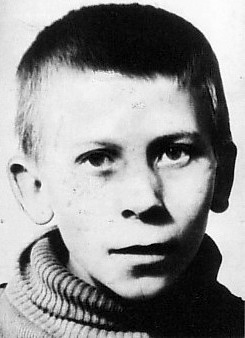
Malcolm Barlow
The following day Nilsen discovered Malcolm- who’d come to thank the stranger for his kindness- perched on his doorstep. Nilsen asked the young man in for a drink but soon considered him a “nuisance” and proceeded to choke his guest to death.
Days later, the landlord requested Nilsen vacate the property as it was due a renovation. This prompted Nilsen to build another bonfire on which to cremate the remains of his most recent victims.
Then, on the 5th October 1981, he moved to an attic flat at 23 Cranley Gardens, Muswell Hill.

23 Cranley Gardens today (image: Google Streetview)
*
With no garden and zero chance of hiding bodies beneath the floorboards, this was possibly a conscious choice by the serial killer who claimed he was desperate for his spree to cease.
But still he continued.
The first victim murdered at Cranley Gardens was 23 year old John Howlett who he met whilst drinking near Leicester Square. As usual, Nilsen invited him home where the pair drank until John passed out. Rudely awakened to find himself being strangled, John put up a ferocious fight and almost succeeded in killing Nilsen himself.
Then, in June 1982, Nilsen spotted 27 year old Graham Allen attempting to flag a taxi on Shaftesbury Avenue.
Nilsen stepped in and the pair ended up sharing the cab back to Cranley Gardens. Of this murder, Nilsen recalled few details; simply that he’d cooked an omelette for Graham before murdering him and then kept his body in the bathtub for several days.
Nilsen’s final victim was Stephen Sinclair, a troubled young man who he encountered on January 26th 1983.

Stephen Sinclair, Dennis Nilsen’s final victim (image: Daily Record)
As he’d done with previous victims, Nilsen invited Stephen to listen to records- his favourite at the time being ‘O Superman’; an eerie electronic song by Laurie Anderson.
As Stephen listened through headphones, Nilsen attacked from behind, strangling him with a ligature.
To dispose of these bodies Nilsen had to improvise, dissecting each corpse and boiling the parts in a large pot on the stove.
Once the flesh softened he’d cut it into small pieces which were unceremoniously flushed down the toilet.
Unsurprisingly a blockage soon ensued- which Nilsen himself complained about- and so, on February 8th 1983, Dyno-Rod employee Michael Cattran came to assess the problem.
It didn’t take long to discover the drains were clogged with a gunky mass of flesh and bone. As Michael worked, Nilsen popped down to see what was going on, gruesomely remarking, “It looks to me like someone has been flushing down their Kentucky Fried Chicken.”
*
The next evening, Nilsen returned home from work to find Detective Chief Inspector Peter Jay and two other police officers stationed outside his door.

Cranley Gardens, 1983
When informed that they’d come to discuss the matter of human remains, Nilsen feigned ignorance, exclaiming, “Good grief, how awful!” Dismissing this act- and having already noted the horrendous stench in the flat- Inspector Jay bluntly said, “Don’t mess about, where’s the rest of the body?”

Dennis Nilsen’s kitchen, Cranley Gardens
Nilsen calmly replied it was in two plastic bags in the wardrobe, adding “It’s a long story… I’ll tell you everything. I want to get it off my chest.”
Arrested on suspicion of murder he was driven to Hornsey police station and, during the short ride, matter-of-factly hinted at the sheer number of people he’d killed. After being charged he was remanded in Brixton prison.

Dennis Nilsen being transported from prison
Dennis Nilsen was tried at the Old Bailey during autumn 1983 and, after considerable debate as to wether or not he was insane, was found guilty on six counts of murder. After describing the “unforgettable tales of horror” associated with the case, the judge sentenced Nilsen to a minimum of 25 years.
The clip below is a news report broadcast shortly after Nilsen’s imprisonment.
In 1994 Nilsen’s sentence was upped to a whole life tariff meaning he was condemned to remain behind bars for the rest of his life- which he did, dying at HMP Full Sutton, East Yorkshire on 12th May 2018 aged 72.
***


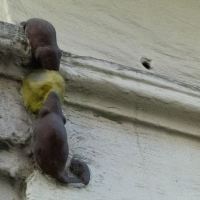
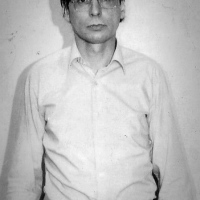

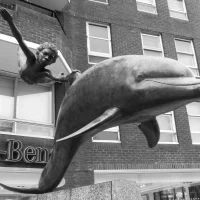
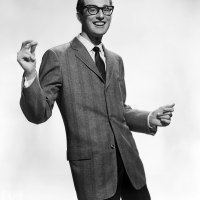
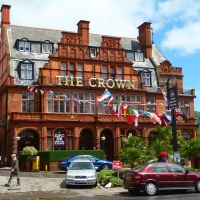



I remember this from your other blog, I think.
I have seen the kitchen from Nilsen’s house, as it was rebuilt as an exhibition in the Met Police ‘Black Museum’. I was lucky to get a tour of that, when I worked for the police.
Best wishes, Pete.
Thanks Pete. Yes, this post originally began life on my second blog; I only posted part 1 there. Unfortunately it was no longer viable to run the second site so I had to close it. I will continue to post articles on London crime on this site from time to time however. What you see here contains parts 2 and 3 on Nilsen which were originally intended for ‘The Crime Compendium’. Best wishes 🙂